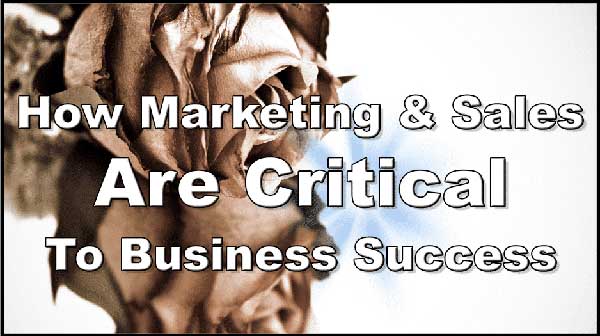Anyone can start a business, but it takes true genius—or hard work—to grow it. Grow or Die.
Don’t think this is true?
Here’s a fact: 80% of businesses fail within the first 18 months. Why do so many companies fall flat on their face? Ask a dozen entrepreneurs and you’ll get a dozen different answers. Most of the responses, though, more or less fall into these two categories: marketing and sales. If you’re intent on not letting your business become another statistic, then make these two components your central focus.
Table of Contents
ToggleWhat Drives Sales?
Business is all about ramping up sales. But what is the driving factor behind the sales? Beyond the simple supply and demand concept, what is it that makes your business different from the competitors? Ultimately, it comes down to how you brand your company. How you market yourself determines whether your business acquires that “it” factor present in every mega successful company.
Determine Your Unique Selling Proposition (USP)
Your USP is a critical aspect of marketing. It’s how you show to potential customers how and why your brand is better than the competitors. What is it that makes your products or services more desirable to your customers? This should go beyond the basics like lower prices, though that can certainly be a part of your USP.
Keep these points in mind when coming up with your USP:
- It should not be easily replicated by your competitors
- The USP should be a concept that can be easily understood by your demographic consumers
- It can take advantage of a current trend
Have trouble coming up with a unique selling proposition? Here are a few successful examples implemented by fairly well-established brands that you may (or may not) have heard of.
Tom’s Shoes – This company sells leather shoes and heavily markets its footwear as comfy and lightweight. That’s all good, but there are plenty of other shoe brands that offer the same. It’s ‘standout’ USP? For every pair of shoes sold, the company donates a pair to a needy child. Now that is a USP that’s just as out-of-the-box as it is selfless.
The Mast Brothers – This is a chocolate company owned by two brothers. So how do they compete with conglomerate giants like Hershey’s and See’s? Every bar of chocolate – from the shaping to the packaging – is made by hand using 18th century-style techniques. Unique? Definitely.
Dutch Boy Paints – This company’s USP lies not in its actual product, but in the tin the paint comes in. Its Twist & Pour container makes opening the can, resealing the can and pouring much easier for DIY and professional painters alike.
None of these companies settled for run-of-the-mill and neither should yours. A USP puts a bit of ‘oomph’ into what would otherwise just be another same ol’ same ol’ among your industry. Think outside the box for ideas that would be considered unconventional—even within your niche.
Generating a Solid Sales Lead
Alright, so you came up with a USP that you think will resonate well with your consumers. The next step is to generate a sales lead by ramping up marketing for your USP. This is where you have to diversify and not place all your eggs in one basket.
Believe it or not, social networks are NOT the most effective source for generating qualified sales leads. When it comes to B2B transactions, for example, social media is a great way to engage with your target audience, but it it can’t be your only avenue. Other methods, such as webinars, telemarketing, and trade shows, account for a much larger slice of the pie.
This isn’t intended to dissuade you from setting up a company profile via multiple social networks. It’s just to point out that you should use multiple avenues of approaches. In fact, you will need to do just that as you nurture your leads and turn curious potential consumers into long-term, loyal customers. Lead generation is only the first step!
Designing a Sales Funnel Process
There are all sorts of sales funnel models out there, though most can be broadly dissected into these three categories:
- General leads
- Prospects
- Customers
Depending on your specific industry, your sales funnel may include additional categories, though these three will suffice for this discussion.
-
General Leads
General leads are the first category and comprise of a broad category of people who may be interested in your company. So how do you go about generating leads? It goes back to what was said earlier about using a diverse array of approaches, both online and offline. The purpose of this first stage is raising awareness about your brand, says women’s business coach and author Sharon Michaels (@SharonMichaels).
Use some or all of these methods, but definitely use more than one:
- Social media, stick with the big dogs likes Facebook, LinkedIn, and Twitter
- An SEO campaign for your website (if you don’t already have a website, then you’re already far behind the pack)
- Pay-per-click
- Content marketing
- Email marketing
- Lead Nurturing
To give these methods more of a “lure factor,” really emphasize on your USP. Otherwise, your sales pitch is indistinguishable from the competitors.
-
Prospects
This is the second stage and the phase where you really need to nurture your leads. These are the people from the general leads category that expressed interest in your company. Perhaps they signed up for your email newsletter, signed up for a trial service, or phoned your company with a question. Don’t let these precious leads go to waste; follow up on it! Here’s how you keep your leads on a string:
Newsletters – Once they signed up for your newsletters, provide them with a steady flow of informative content. Don’t annoy your subscribers by sending a letter every day; two to three emails a week will suffice. Don’t go all salesy here; the content should provide useful information. The last paragraph is where you can include a call-to-action with a link to your website or product launch.
Cold calling – cold calling typically has a bad rep; after all, only 2% of calls actually result in a sale. The stat, though, applies to cold leads. Cold calling is a waste of time if used as a method for generating leads. It’s a whole other story, however, when used to contact prospects who already expressed an interest. Use the phone call to introduce new products, services, or discount offers when you have already converted a lead on your website to a warm lead.
Blogging – This is similar to using newsletters. 90% of the content should be informative, with the final paragraph reserved for introducing and linking to a new item or service. You can also use your posts to add quickie reminders, such as to follow your company on social media or to log in for an upcoming live webinar. On a final note about blogging, longer posts (1,500+ words, such as this article) tend to perform better in terms of social media shares.
Provide freebies – People like free stuff, and if you provide freebies before they even become a customer, then they’ll be more inclined to become one. Why? It’s because you were willing to scratch their back without them scratching yours. Freebies can be in the form of discount codes, free downloadable materials, or free sample items. Freebies can also be given individually to subscribers on their birthdays for a more personal touch.
-
Customers
Congratulations! You were able to convert a prospect into a customer. This is a huge accomplishment; only about 38% of leads become prospects, and only 29% of prospects become eventual customers.
Your job is far from over, though. You have to continue to nurture the customer so he goes from a one-time customer to a loyal consumer. You may have heard of the saying that 80% of your business comes from 20% of your customers, or more specifically, repeat customers. This is very true, which is why you need to reward such loyalty. 75% of US companies with a loyalty program see a return in investment with their program.
The simplest type of loyalty program operates on a point or purchase value system. If you run a coffee shop, for instance, then buying 10 lattes could be rewarded with the 11th cup being on the house. You can also offer a base reward to encourage customers to sign up; perhaps one free latte just for signing up for loyalty membership.
Having trouble formulating a loyalty program? Check out this site for real-life examples of successful loyalty programs as well as a few not-so-successful ones.
Got a Business? Invest in It
You already took the time, money, and commitment to start a business, so don’t get all nonchalant all of a sudden when handling the marketing and sales. The key is to make your brand stand out one way or another and then create a multi-stage process with offers that nurture your leads every step of the way. If you do that, then your business just might actually stick around for a while.











